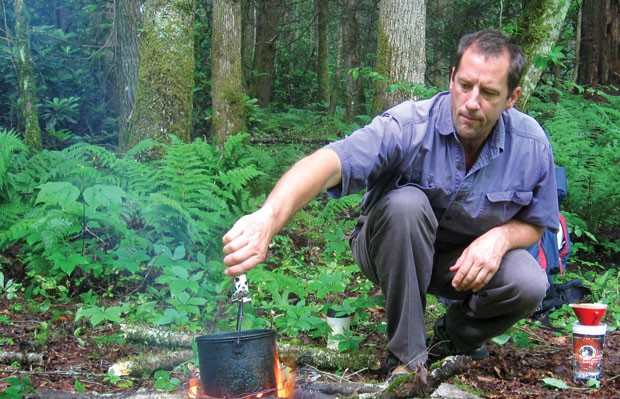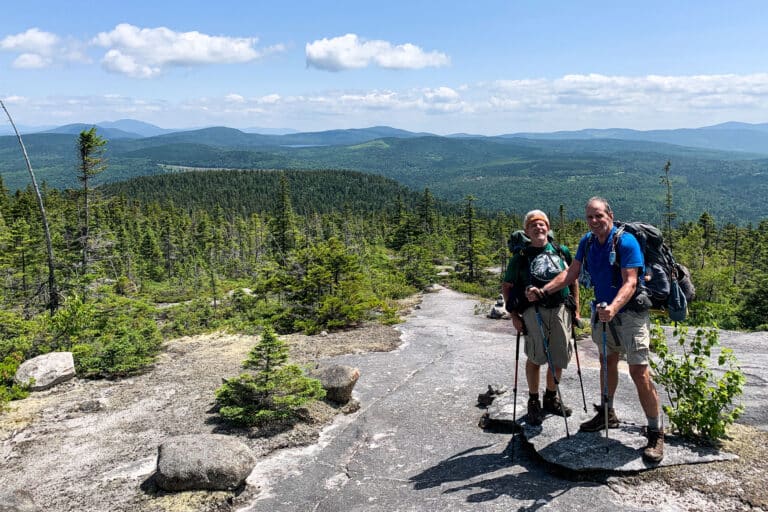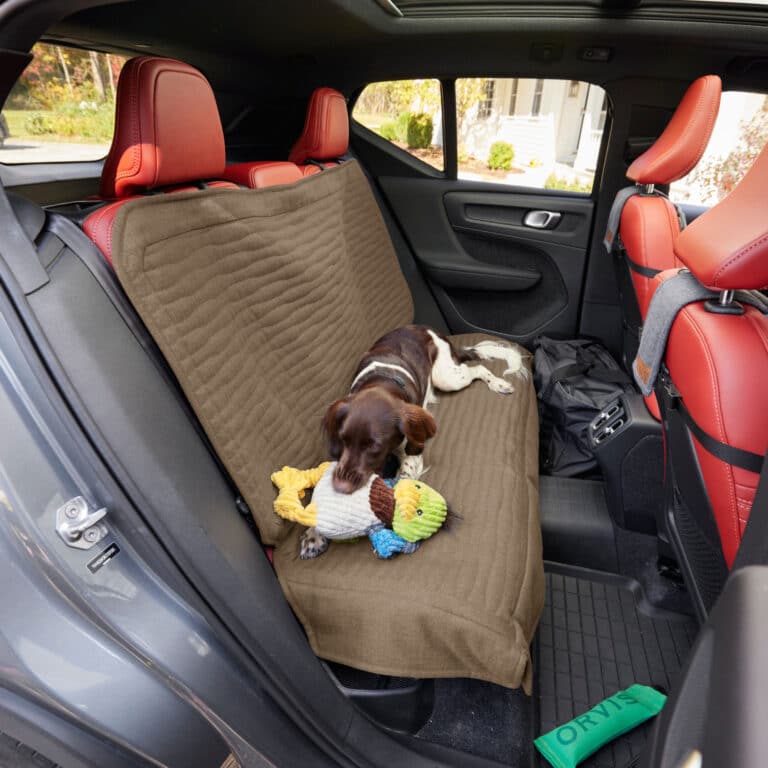Less is More: Even after accumulating several fancy cookstoves, Johnny Molloy still prefers a fire.
I remember my first backpack. It was a green Academy Broadway external frame bought from a now-defunct outlet in Knoxville, Tennessee. Five pockets in which to stuff gear. Neither the shoulder straps nor the hip belt had padding. Twenty bucks of beer drinking money was diverted for that pack.
Was I ever proud—and ready to tackle Great Smoky Mountains National Park, a few ridges distant from the University of Tennessee. Backpacking was new and foreign to me, a pure bred flatlander from West Tennessee who never realized my home state had mountains, bears and trout streams. I had to borrow most of my equipment on those inaugural trips.
To fill those pack pockets, the first order of business was to get one of those cool survival knives with the built-in bubble compass and a hollow innard complete with fishing line, hooks, and matches. I ordered a discontinued sleeping bag from Sierra Trading Post, bought a closed cell foam sleeping pad from Wal-Mart, then scored some secondhand black leather combat boots at the local thrift store. A borrowed bulky blue tarp provided a musty shelter.
And thus began my journey along the gear curve. The make-do backpacker occupies the first stage of the gear curve. Like me, the make-do backpacker probably borrows half the equipment on their back and buys discount stuff for the other half. They can be spotted on the trail invariably wearing too tight jeans (the zip-off pants are farther down the curve) and some kind of camouflage shirt or hat. At camp they try to think of ways to use that big survival knife. An oversized cheap tent invariably pops up wherever they are. They haven’t figured out that with outdoor gear—like anything else— you get what you pay for. They are learning and most eventually move on down the spectrum. Others fall off the gear curve altogether.
The outdoor purists rise higher on the gear curve. Several near-disasters have left them looking for better stuff to make roughing it a little easier: a real whitewater boat—or a quality PFD—to survive a class IV rapid; a name brand rain jacket to wear in town and on the trail. I remember when the soles came off my combat boots while trudging through snow high on Forney Ridge. I used a piece of string to stop the sole from flapping. After returning home I then dropped nearly 100 bucks on some Vasque boots. The mountain biking equivalent would be graduating to clip-on pedals and an aerodynamic helmet after crashing in the woods.
The purists will be seen at outdoor specialty shops, perusing for hours over the perfect headlamp. Before entering a store, they have researched for days on the web and created comparative spreadsheets. They end up with the best gear and are always on the lookout for the latest in high-tech offerings.
The gearheads stand atop the gear curve. The gearhead has it all, literally, and it’s in his pack. Around the fire you grumble about losing a tiny screw from your camp stove and ten minutes later the gearhead proudly returns with the exact size screw you need—and the latest Leatherman to tighten it.
Like anything, the new toys become old. But the quest for the latest gadget continues, whether you need it or not. I once bought a camp mirror, only to discover that I didn’t want to see my own mug after three days in the forest. Pride in showing off the hippest gear lost significance in the face of towering trees and far-off vistas.
And that leads to the downward stage of the gear curve. Failed and forgotten equipment bought over the years joins the dusty junk menagerie lining your garage walls. My first headlamp took four AA batteries and weighed enough to give me a neck ache. Inventory your stuff and count how many items you’ll never use again. Wise outdoor enthusiasts assess their gear needs for each situation before leaving home. Less is more. Bring the good quality stuff that works for you and nothing more.
Or you can go without and adapt, looking outward at what you came to experience rather than inward at what you have. That is how I discovered many “necessities” really aren’t necessary. Why carry a stove when I can cook over a fire? Why spend hundreds—even thousands—on another boat, skis or bike when you could use that money going to your dream destination to actually do what you love? Why spend time in the store looking at more gear, or scrolling through web sites, when you can be out there on the river or on the trail?
It really is about the experience, not what gear you use. At the end of the gear curve, you realize that you don’t need more stuff, but more time. Time is the most valuable commodity on Earth. And if you are like me, you want to spend as much of it as possible out there.








